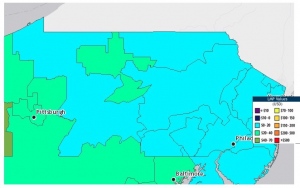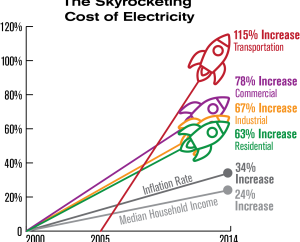In financial terms, power is a consumable energy asset fit for being purchased, sold, and exchanged. A power market, likewise power trade or PX, is a framework empowering buys, through offers to purchase; deals, through offers to sell. Offers and offers use organic market standards to set the cost. Long haul contracts are like power buy arrangements and for the most part, thought to be private two-sided exchanges between counterparties. Discount exchanges (offers and offers) in power are regularly cleared and settled by the Houston Energy Rates administrator or a specific reason free substance accused solely of that capability. Market executives don’t clear trades anyway much of the time and require data on the trade solicitation to stay aware of old enough and weight balance. The items inside an electric market generally contain two sorts: power and energy. Power is the metered net electrical exchange rate out of the blue and is estimated in megawatts (MW). Energy is the power that courses through a metered point for a given period and is estimated in megawatt hours (MWh).
Energy-related Wares

Markets for energy-related wares exchange net age yield for various stretches as a rule in additions of 5, 15, and an hour. Markets for power-related items required and overseen by (and paid for by) market administrators to guarantee dependability, are viewed as auxiliary administrations and incorporate such names as turning hold, non-turning save, working stores, responsive hold, guideline up, guideline down, and introduced limit. Moreover, for most significant administrators, there are markets for transmission blockage and power subsidiaries, for example, power fates and choices, which are effectively exchanged. This cycle has frequently happened in line up with the rebuilding of gaseous petrol markets.
History
- One disputable presentation of energy market ideas and privatization of electric power frameworks occurred in Chile in the mid-1980s, in the line up with other market-situated changes related to the Chicago Young men. The Chilean model was by and large apparent as fruitful in carrying judiciousness and straightforwardness to drive value. Argentina enhanced the Chilean model by forcing severe cutoff points on market fixation and by working on the construction of installments to units held for possible later use to guarantee framework unwavering quality.
- One of the chief motivations behind the presentation of market ideas in Argentina was to privatize existing age resources (which had fallen into decay under the public authority claimed syndication, bringing about successive help interferences) and to draw in the capital required for the restoration of those resources and for the framework development. The World Bank was dynamic in presenting different mixture markets in other Latin American countries, including Peru, Brazil, and Colombia, during the 1990s, with restricted achievement.
- It then proposed evaluating these costs by tackling a systemwide cost minimization issue while conforming to the framework all’s functional limitations, for example, generator limit limits, locational loads, line stream limits, and so on utilizing direct programming. The locational peripheral costs then arose as the shadow costs for loosening up as far as possible in every area. A vital occasion for power markets happened in 1990 when the Unified Realm government under Margaret Thatcher privatized the UK power supply industry. The cycle followed by the English was then utilized as a model for the rebuilding of a few other Province nations, outstandingly the Public Power Markets of Australia.

